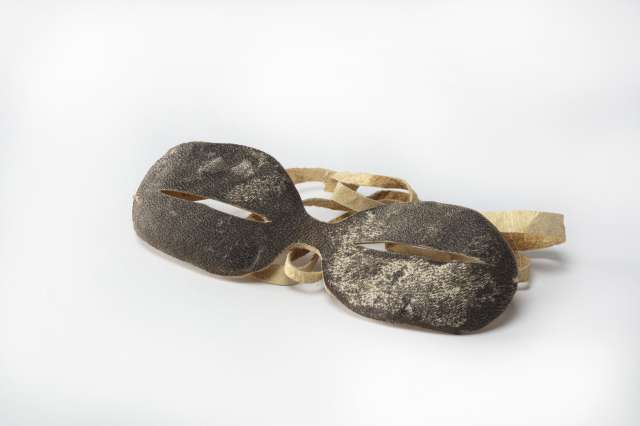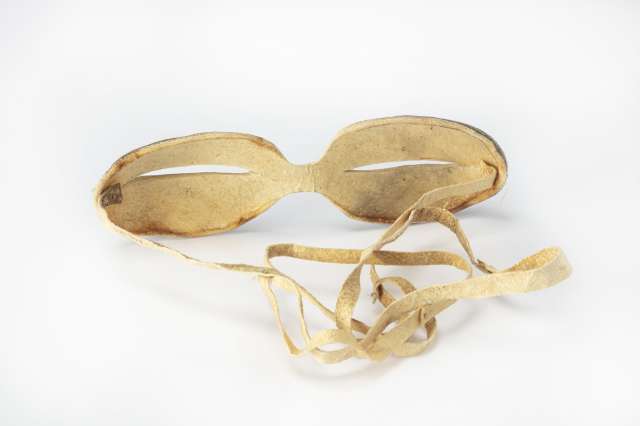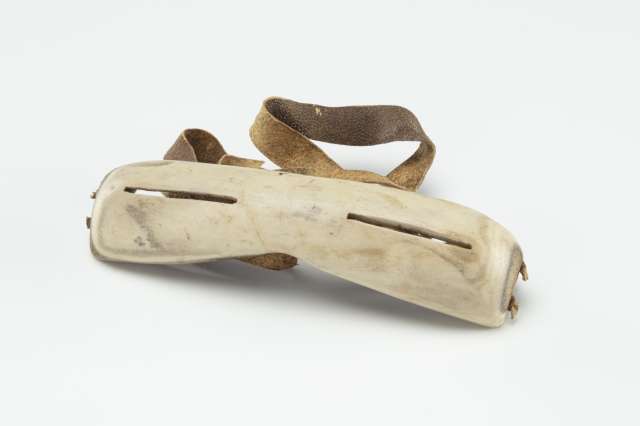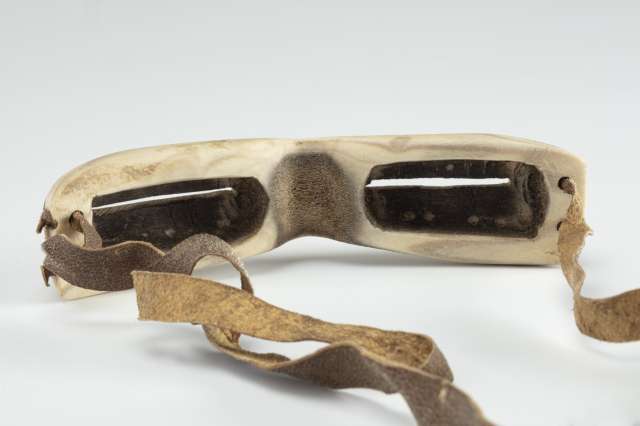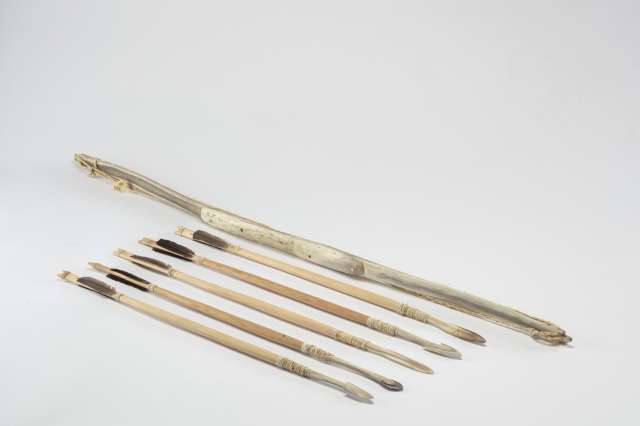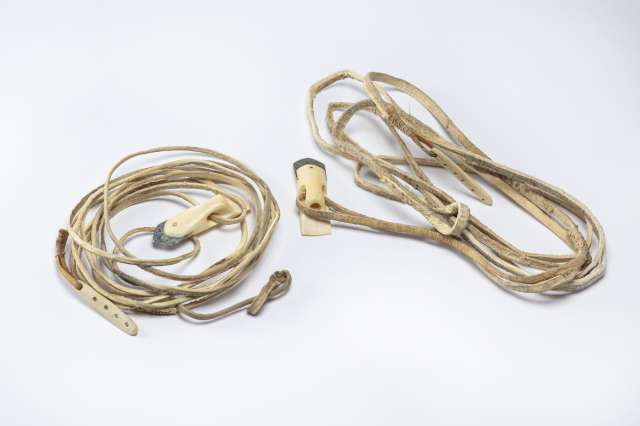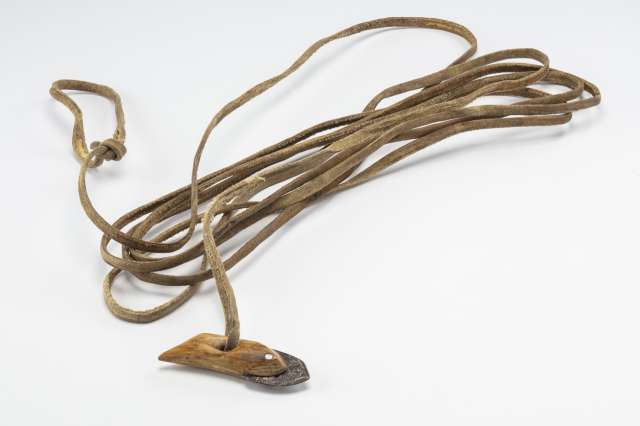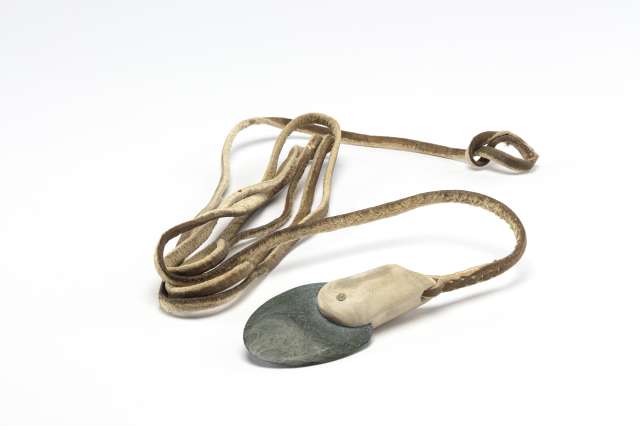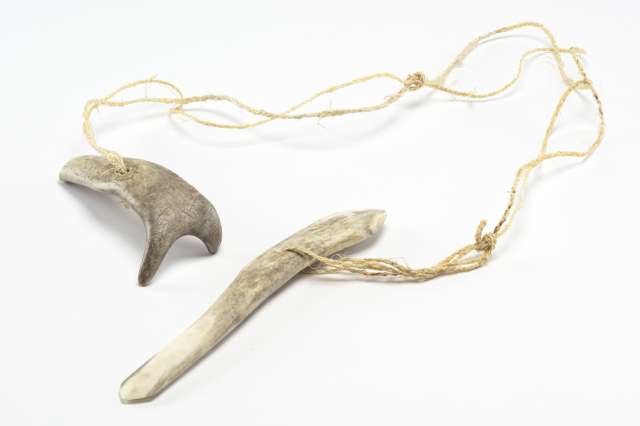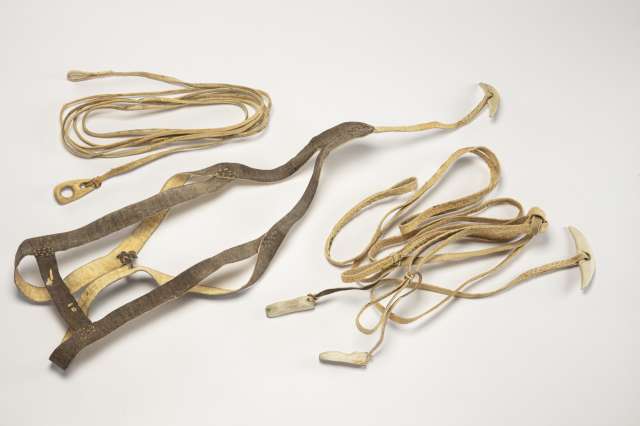Jack Haulli: These are goggles. They are made of bone.
They were used more in the winter, not in spring.
In the spring, the edges here would gather snow,
it would cause it to be twisted. They were also used during the winter.
This is made of... what is it?... of bone but this one is made from an antler
for sure. If you look at the edge here [Jack points at the leftmost side of the glasses]
this part is soft, and the bottom is harder.
Because it's made from an antler and like that, it was used in the winter
by men, especially by hunting men.
This [Jack points at the lanyard] is made of sealskin, it looks like ringed sealskin.
It does not stretch. It has to be made exactly.
It's very practical, something to be proud of. It's still used today.
They have been made for a long time to prevent snow blindness.
Outside, in the Arctic it can seem very bright.
If everything seems bright,
and you are exposed to too much brightness, it can cause snow blindness. If you get snowblinded in the winter
it can become very painful to the eyes. That is why they are made.
I have told you what I know. Some people
may have more to say about it. I have told you what I know.
I'm going to try to speak more in inuktitut. This was used to prevent snow blindness
and was made a while ago. Today,
it can be made from paper if hard enough.
Today we have cardboards,
as long as there is a slit in the middle that you can see through.
People can make them from cardboard paper or
people buy them from stores. Goggles, glasses, spectacles
eye sunglasses are what they are called now.
In the future,
if they aren't just in museums, some might be using them.
Some people might not want to lose them. Some people
might just find them amusing. Some might want to use them.
Some might even make money... They might think they can make a monetary profit
and start making them. If you think about it, the fashion industry (there is
no name for that one yet in inuktitut), so the fashion industry
might take a look at this, like it and want to mass-produce it.
We might see this in the future. But here is evidence that Inuit
invented this. This was made by Inuit.
Made of bone. The past, the present,
and the future. I'm trying to speak in all tenses
but for now, this is all I have to say about it.

